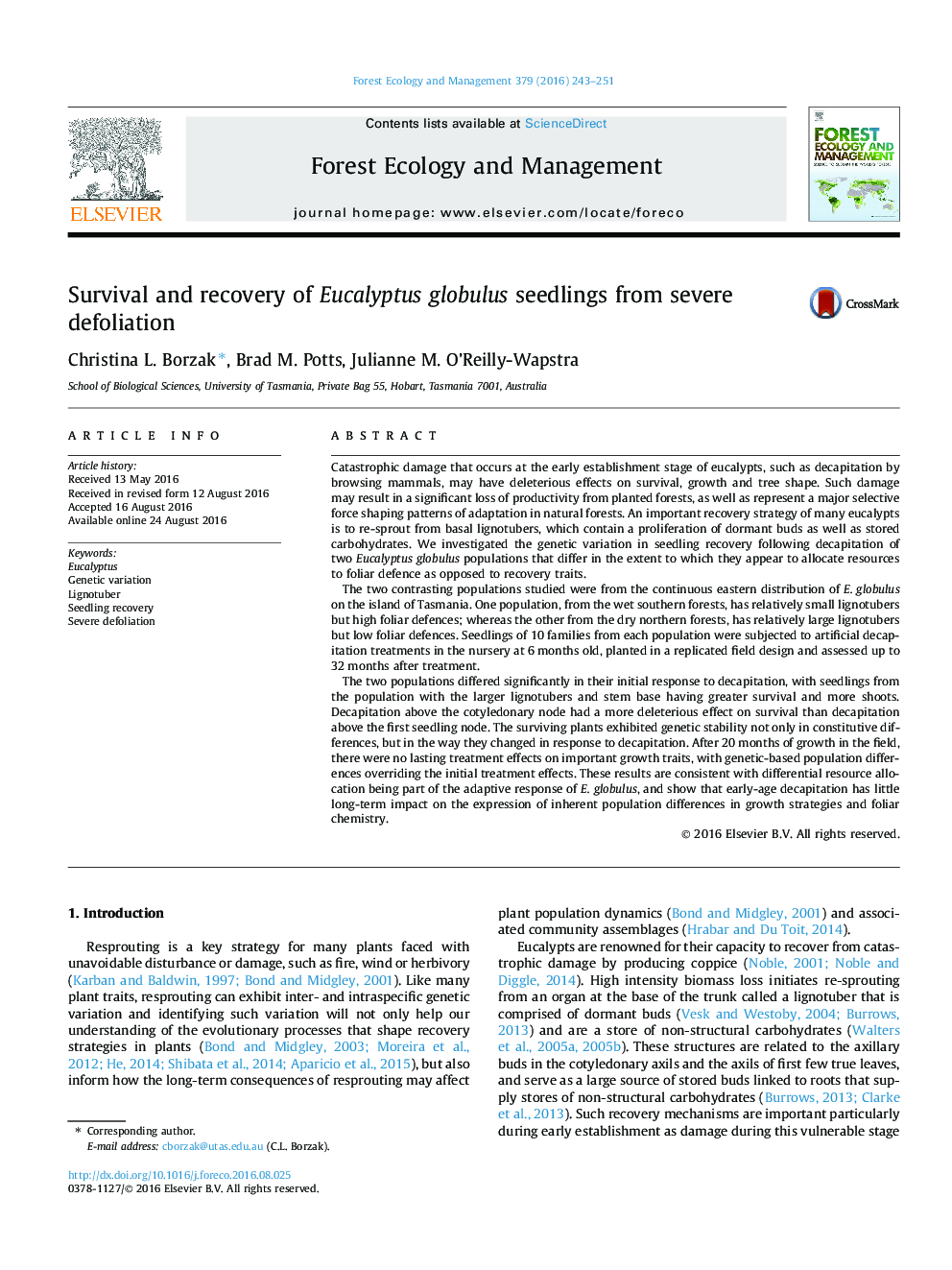| کد مقاله | کد نشریه | سال انتشار | مقاله انگلیسی | نسخه تمام متن |
|---|---|---|---|---|
| 6459649 | 1421379 | 2016 | 9 صفحه PDF | دانلود رایگان |
- Genetic variation in E. globulus seedling recovery following decapitation was investigated.
- Initially, the population with larger lignotubers had greater survival and more shoots.
- After 20Â months, genetic-based population differences overrode the initial effects.
- There were no lasting treatment effects on important growth traits.
- Early-age decapitation has little long-term impact on inherent population differences.
Catastrophic damage that occurs at the early establishment stage of eucalypts, such as decapitation by browsing mammals, may have deleterious effects on survival, growth and tree shape. Such damage may result in a significant loss of productivity from planted forests, as well as represent a major selective force shaping patterns of adaptation in natural forests. An important recovery strategy of many eucalypts is to re-sprout from basal lignotubers, which contain a proliferation of dormant buds as well as stored carbohydrates. We investigated the genetic variation in seedling recovery following decapitation of two Eucalyptus globulus populations that differ in the extent to which they appear to allocate resources to foliar defence as opposed to recovery traits.The two contrasting populations studied were from the continuous eastern distribution of E. globulus on the island of Tasmania. One population, from the wet southern forests, has relatively small lignotubers but high foliar defences; whereas the other from the dry northern forests, has relatively large lignotubers but low foliar defences. Seedlings of 10 families from each population were subjected to artificial decapitation treatments in the nursery at 6Â months old, planted in a replicated field design and assessed up to 32Â months after treatment.The two populations differed significantly in their initial response to decapitation, with seedlings from the population with the larger lignotubers and stem base having greater survival and more shoots. Decapitation above the cotyledonary node had a more deleterious effect on survival than decapitation above the first seedling node. The surviving plants exhibited genetic stability not only in constitutive differences, but in the way they changed in response to decapitation. After 20Â months of growth in the field, there were no lasting treatment effects on important growth traits, with genetic-based population differences overriding the initial treatment effects. These results are consistent with differential resource allocation being part of the adaptive response of E. globulus, and show that early-age decapitation has little long-term impact on the expression of inherent population differences in growth strategies and foliar chemistry.
Journal: Forest Ecology and Management - Volume 379, 1 November 2016, Pages 243-251
